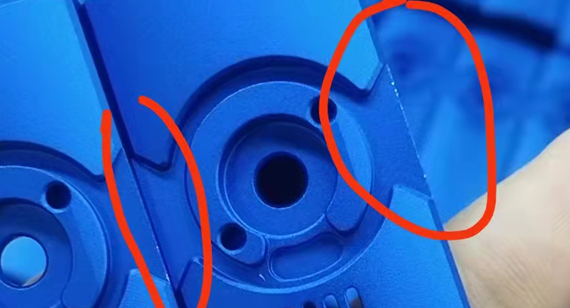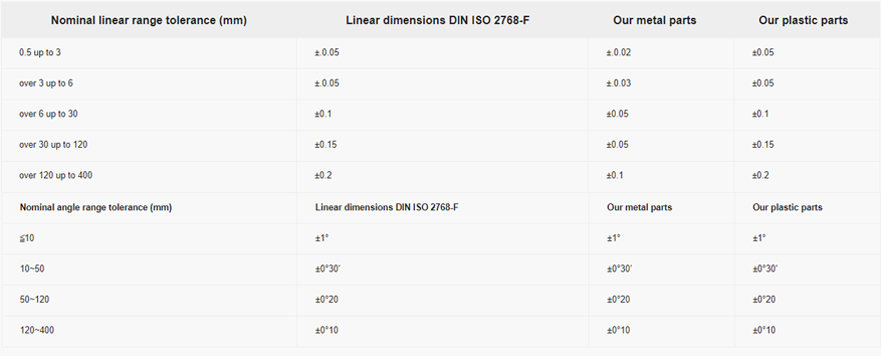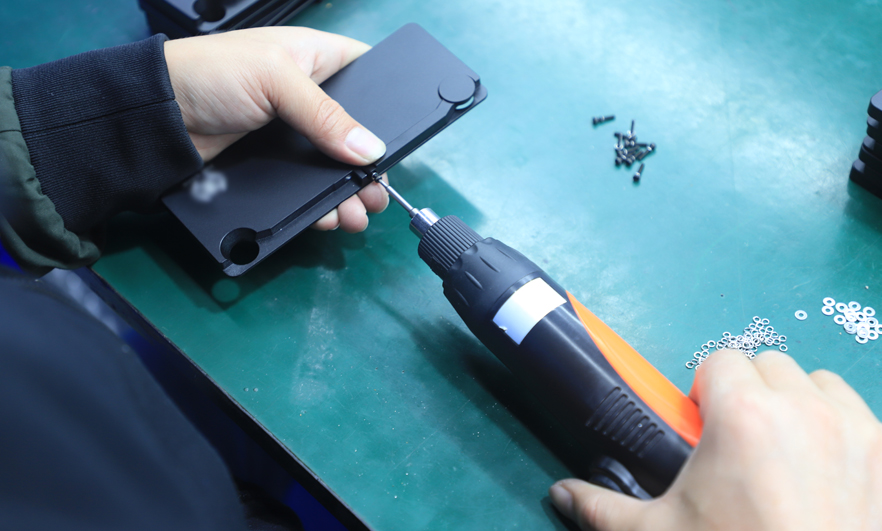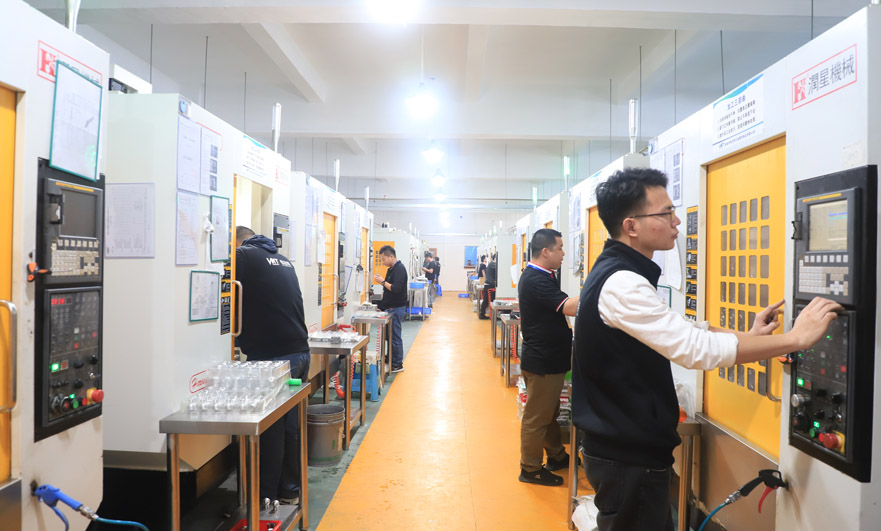15 years one-stop China custom CNC machining parts factory

Hey there I’m VMT Sam!
With 25 years of CNC machining experience we are committed to helping clients overcome 10000 complex part-processing challenges all to contribute to a better life through intelligent manufacturing. Contact us now
 134 |
Published by VMT at Nov 14 2022
134 |
Published by VMT at Nov 14 2022
General technical requirements for CNC parts machining
1. Scale removal of CNC parts.
2. There should be no scratches, scratches and other defects that damage the surface of the parts on the surface of CNC parts.
3. Remove burrs.

CNC machining heat treatment requirements
1. After quenching and tempering treatment, high frequency quenching 50~55HRC.
2. High frequency quenching for CNC parts, tempering at 350~370℃, 40~45HRC.
3. Carburizing depth 0.3mm.
4. Carry out high temperature aging treatment.
CNC machining tolerance requirements
1. The unmarked shape tolerance shall meet the requirements of GB1184-80.
2. The allowable deviation of the unmarked length dimension is ±0.5mm.
3. The tolerance zone of the casting is symmetrical to the basic dimension configuration of the blank casting.

Precision CNC parts edges and corners
1. The fillet radius R5 is not specified.
2. The unmarked chamfer is 2×45°.
3. Sharp corners/sharp corners/sharp edges are blunt.
CNC parts machining and assembly requirements
1. Each seal must be saturated with oil before assembly.
2. The assembled rolling bearing is allowed to use oil heating for hot charging, and the temperature of the oil should not exceed 100 ℃.
3. After the gear is assembled, the contact spots and backlash of the tooth surface should meet the requirements of GB10095 and GB11365.
4. Sealing packing or sealant is allowed when assembling the hydraulic system, but should be prevented from entering the system.
5. Parts and components (including outsourced parts and outsourced parts) that enter the assembly must have the qualification certificate of the inspection department before they can be assembled.
6. CNC parts must be cleaned and cleaned before assembly, and there should be no burrs, flashes, oxide scales, rust, chips, oil, colorants and dust.
7. Before assembly, the main fit dimensions of parts and components, especially the interference fit dimensions and related accuracy, should be reviewed.
8. The parts are not allowed to be knocked, bumped, scratched and corroded during the assembly process.
9. When tightening screws, bolts and nuts, it is strictly forbidden to strike or use unsuitable bits and wrenches. After tightening, the screw slots, nuts and screws, and the heads of the bolts shall not be damaged.
10. Fasteners with specified tightening torque must be tightened with a torque wrench and tightened according to the specified tightening torque.
11. When the same part is fastened with multiple screws (bolts), each screw (bolt) should be crossed, symmetrically, gradually and evenly tightened.
12. When assembling, the taper pin and the hole should be painted and inspected, and the contact rate should not be less than 60% of the matching length, and should be evenly distributed.
13. The flat key and the two sides of the keyway on the shaft should be in even contact, and there should be no gap between the mating surfaces.
14. The number of tooth surfaces in contact with the spline assembly at the same time shall not be less than 2/3, and the contact ratio shall not be less than 50% in the direction of the length and height of the spline teeth.
15. After the flat key (or spline) of the sliding fit is assembled, the fittings can move freely without uneven tightness.
16. After bonding, remove excess adhesive that has flowed out.
17. The outer ring of the bearing, the semi-circular hole of the open bearing seat and the bearing cover must not be stuck.
18. The outer ring of the bearing should be in good contact with the semi-circular hole of the open bearing seat and the bearing cover. When checking with coloring, it should be 120° symmetrical to the center line with the bearing seat and 90° symmetrical to the center line with the bearing cover. even contact. When checking with a feeler gauge within the above range, the 0.03mm feeler gauge shall not be inserted into 1/3 of the outer ring width.
19. After the bearing outer ring is assembled, it should be in even contact with the end face of the bearing cap at the positioning end.
20. After the rolling bearing is installed, it should be flexible and stable to rotate by hand.
21. The joint surfaces of the upper and lower bearing shells should be closely attached and cannot be checked with a 0.05mm feeler gauge.
22. When fixing the bearing bush with the locating pin, drill the hinge and match the pin under the condition that the mouth face and end face of the bush are flush with the opening face and end face of the relevant bearing hole. The pins must not be loosened after being driven in.
23. The bearing body and the bearing seat of the spherical bearing should be in uniform contact, and the contact should not be less than 70%.
24. When the surface of the alloy bearing lining is yellow, it is not allowed to use, and there is no nucleation phenomenon within the specified contact angle. The nucleation area outside the contact angle shall not be greater than 10% of the total area of ??the non-contact area.
25. The datum end face of the gear (worm gear) and the shaft shoulder (or the end face of the positioning sleeve) should fit together, and check with a 0.05mm feeler gauge. And the verticality requirements of the gear reference end face and the axis should be guaranteed. Huiwen Zhizao is a machining factory with more than ten years of CNC machining experience. It has complete equipment, CNC CNC turning/milling/grinding/drilling/machining. Partners who have parts machining needs are welcome to call for quotation.
26. The joint surface of the gear box and the cover should be in good contact.
27. Strictly check and remove the sharp corners, burrs and foreign objects left in the machining of CNC parts before assembly. Make sure that the seals are not scratched when they are installed.

CNC machining parts requirements
1. Numerical control parts should be inspected and accepted according to the process. After the previous process has passed the inspection, it can be transferred to the next process.

2. The CNC machined parts are not allowed to have burrs.
3. The finished parts should not be placed directly on the ground, and necessary support and protection measures should be taken. The machined surface is not allowed to have rust, bumps, scratches and other defects that affect performance, life or appearance.
4. There should be no peeling on the surface of rolling finishing.
5. There should be no oxide scale on the surface of the parts after the final heat treatment. Finished mating surfaces and tooth surfaces should not be annealed.
6. The surface of the CNC machined thread is not allowed to have defects such as black skin, bumps, random buckles and burrs.
The above is just a summary of the VMT CNC machining factory. If you want to know more about CNC machining, you can contact us: inquiry@vimetal.com.cn to negotiate with us.
Ready To Start Your Next Project?
Get Instant Quote

Request a Free Quote
Send us a message if you have any questions or request a quote. We will get back to you ASAP!
